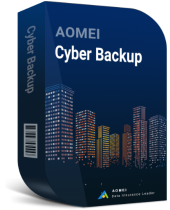Efficient and Flexible Virtualization in Disaster Recovery
As virtualization rapidly gaining popularity in IT industry, what does it bring to disaster recovery? In this article, I will introduce virtual disaster recovery and compares it to physical disaster recovery.
IT mega trend: Virtualization disaster recovery
If you are deeply involved in the IT industry, you must understand how important disaster recovery is for an enterprise.
Disaster recovery (DR) relies upon the replication of data and computer processing in an off-premises location not affected by the disaster. When servers go down because of a natural disaster, equipment failure or cyber attack, a business needs to recover lost data from a second location where the data is backed up.
Today, most industries are moving toward virtualization, disaster recovery is no exception. Virtualization brings great flexibility to disaster recovery, and dramatically reduces costs compares to traditional physical measures. As a result, it is rapidly spreading among enterprises.
Before we dive into virtual disaster recovery, let me first briefly explain what virtualization is.
What is virtualization
Virtualization uses software to create an abstraction layer on computer hardware that allows the hardware elements of a single computer—processors, memory, storage and more—to be divided into multiple independent virtual machines (VMs) running their own operating systems (OS).
- From www.ibm.com
As mentioned above, the advantages of virtualization are that by running multiple different operating systems on a single physical machine through a type 1 or type 2 hypervisor, enterprises can use physical computer hardware more efficiently, reducing infrastructure, staff management, workload, and many other IT expenses.
More and more datacenters toady are choosing to operate in hybrid environments containing both physical and virtual machines, to address complex business requirements and maximize performance and efficiency. However, virtualization brings new challenge to disaster recovery.
What is virtual disaster recovery
Virtual disaster recovery refers to the use of virtualized workloads for disaster recovery planning and failover. To achieve this, organizations need to regularly replicate workloads to an offsite virtual disaster recovery site.
For enterprises in virtual environments, VM replication provided by hypervisor vendors may be enough. As for physical or hybrid environments, physical to virtual conversion (P2V) is still needed before replication.
Virtual disaster recovery vs physical disaster recovery
As I mentioned before, virtualization brings great flexibility to traditional physical disaster recovery. It is much easier to create an image-level backup of a virtual machine and start it on another bare-metal host than migrating workloads to a remote physical site that needs to be rebuilt.
Here I made a comparison to help you better understand the differences between physical and virtual disaster recovery.
| Disaster recovery type | Physical disaster recovery | Virtual disaster recovery |
| Infrastructure | physical | virtual |
| Space utilization | lower | higher |
| Recovery points | less | more |
| Recovery time | more | less |
| Costs | higher | lower |
| Test difficulty | higher | lower |
| Instant undo feature | no | snapshots |
In general, virtual disaster recovery provides the advantages of lower infrastructure costs and higher efficiency, and better maintains business continuity.
What makes a good disaster recovery plan
A good disaster recovery plan is the one that is best suited to the enterprises’ actual situation. In practice, the following factors are most often taken into consideration:
- Recovery Time Objective (RTO) -- the measure of downtime
- Recovery Point Objective (RPO) -- the measure of data loss
- Test Time Objective (TTO) -- the measure of testing ease
These recovery objectives vary according to disaster recovery solutions, such as the following graph:
As you can see, a disaster recovery plan in virtualization technology with ideal RTO and RPO allows enterprises to quickly switch to disaster recovery mode, but it can also be costly. Therefore, it is important to make bold assumptions about maximum tolerable downtime and data loss.
In addition, to further reduce costs, affordable third-party software can also be taken into consideration. For example, AOMEI Cyber Backup enables you to restore the entire VMware virtual machine to a usable state quickly without re-creating and configuring a new VM, greatly reduce business downtime and possible financial loss.

- Free VMware & Hyper-V VMs protection.
- Agentless and automatic backup virtual machines.
- Fast VM recovery with minimal downtime.






